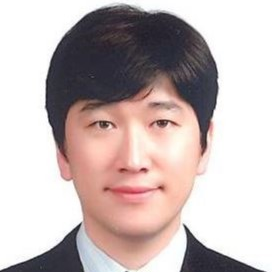Sciences and Innovations in Heat Pump/Refrigeration: Volume II
A special issue of Applied Sciences (ISSN 2076-3417). This special issue belongs to the section "Energy Science and Technology".
Deadline for manuscript submissions: closed (25 February 2021) | Viewed by 33490
Special Issue Editors
Interests: heat pump and refrigeration; thermally driven heat pump; air conditioning; refrigerant; adsorption; desiccant; optimization
Special Issues, Collections and Topics in MDPI journals
Interests: heat pump and refrigeration; phase-change heat transfer; multiphase flow; heat exchanger; heat transfer enhancement; utilization of waste heat; jet flow; deep learning
Special Issues, Collections and Topics in MDPI journals
Interests: heat transfer; gas turbine; air-conditioning; boiler
Special Issues, Collections and Topics in MDPI journals
Special Issue Information
Dear Colleagues,
This Special Issue is a continuation of the previous Special Issue “Sciences in Heat Pump and Refrigeration”, which was closed in December 2019, and we wish to attract publications related to heat pump and refrigeration. As heat pump and refrigeration are technologies used in a variety of applications (air conditioning, food preservation, hot water and steam generation, drying, cryogenic storage, etc.), the related research area’s span is very broad and includes both basic science and advanced engineering. Therefore, this new Special Issue welcomes basic scientific studies such as the prediction of refrigerant properties by molecular simulation and new materials for thermally driven heat pumps, as well as applied scientific studies that lead to innovation, such as the application of AI and heat transfer enhancement by nanostructures, amongst others.
Prof. Dr. Takahiko MiyazakiProf. Dr. Koji Enoki
Prof. Dr. Joon Ahn
Guest Editors
Manuscript Submission Information
Manuscripts should be submitted online at www.mdpi.com by registering and logging in to this website. Once you are registered, click here to go to the submission form. Manuscripts can be submitted until the deadline. All submissions that pass pre-check are peer-reviewed. Accepted papers will be published continuously in the journal (as soon as accepted) and will be listed together on the special issue website. Research articles, review articles as well as short communications are invited. For planned papers, a title and short abstract (about 100 words) can be sent to the Editorial Office for announcement on this website.
Submitted manuscripts should not have been published previously, nor be under consideration for publication elsewhere (except conference proceedings papers). All manuscripts are thoroughly refereed through a single-blind peer-review process. A guide for authors and other relevant information for submission of manuscripts is available on the Instructions for Authors page. Applied Sciences is an international peer-reviewed open access semimonthly journal published by MDPI.
Please visit the Instructions for Authors page before submitting a manuscript. The Article Processing Charge (APC) for publication in this open access journal is 2400 CHF (Swiss Francs). Submitted papers should be well formatted and use good English. Authors may use MDPI's English editing service prior to publication or during author revisions.
Keywords
- low-global-warming-potential refrigerants
- absorption/adsorption heat pump and refrigeration
- desiccant air conditioning
- heat and mass transfer enhancement
- innovative heat exchangers
- application of AI for air conditioning
- visualization
- system optimization and dynamic control







